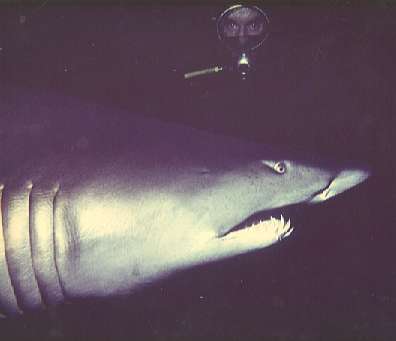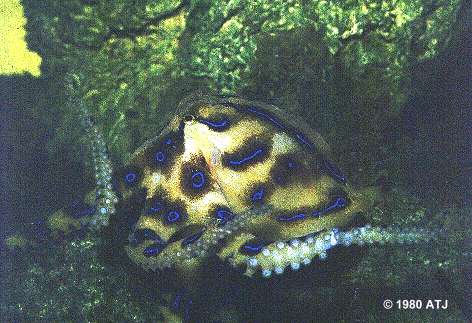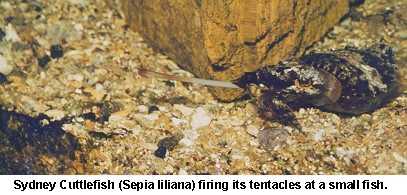 I was born and raised in the northern suburbs of Sydney, Australia. My dad had kept fish for many years and we had a room (the Fish Room) with over 30 tanks. He kept and bred tropical freshwater fish and most of the tanks were quite small - around 18". I guess this is where my interest in fish started.
I was born and raised in the northern suburbs of Sydney, Australia. My dad had kept fish for many years and we had a room (the Fish Room) with over 30 tanks. He kept and bred tropical freshwater fish and most of the tanks were quite small - around 18". I guess this is where my interest in fish started.
In the mid-70's, when I was a teenager, I started keeping line caught mullet and leatherjackets in a 3' tank without filtration and only aeration. Despite knowing nothing and having no filtration the fish actually survived - probably more an indication of their hardiness than anything else.
I next started catching small fish (including trevally, seahorses and pipefish) under Spit Bridge (Sydney), wading with a school friend with hand made nets. This evolved into snorkelling at Fairy Bower, near Manly, again with my school friend, and at the same time I started buying marine tropicals. The tanks got better - undergravel filters and heaters and I started working as an assistant at an aquarium shop that specialised in marines. The shop made it easier to buy both fish and equipment including new fangled devices such as protein skimmers.
 I joined the Marine Aquarium Research Institute of Australia (MARIA) where I gained much knowledge on the hobby and about the tropical marines found around Sydney. MARIA had regular meetings for the exchange of ideas and in summer and autumn dive trips around Sydney and farther afield were organised. By now I had 4 tanks - a 4', two 3' and a 2 ' - and I still have those same tanks. I had DIY undergravel filters and used natural seawater collected at Fairy Bower, near Manly in plastic garbage bins. I started diving more frequently and was getting better at catching marines - angels, cheatodons, wrasses, trigger fish, etc. My best catch was in May 1977 when I caught a Centropyge vrolikii.
I joined the Marine Aquarium Research Institute of Australia (MARIA) where I gained much knowledge on the hobby and about the tropical marines found around Sydney. MARIA had regular meetings for the exchange of ideas and in summer and autumn dive trips around Sydney and farther afield were organised. By now I had 4 tanks - a 4', two 3' and a 2 ' - and I still have those same tanks. I had DIY undergravel filters and used natural seawater collected at Fairy Bower, near Manly in plastic garbage bins. I started diving more frequently and was getting better at catching marines - angels, cheatodons, wrasses, trigger fish, etc. My best catch was in May 1977 when I caught a Centropyge vrolikii.
With my interest in fish and the sea the next logical step was to study Marine Biology, which I did for 4 years and achieved a BSc with Honours in Marine Science. While I have not used the degree in a real job, the information I learnt is still useful to me in this hobby. While at University, I learnt to SCUBA dive and this made catching fish somewhat easier.Blue-lined Octopus (Hapalochlaena fasciata)
 In 1979 and 1980 I started keeping cephalopods. Over the time I had numerous Sydney Cuttlefish (Sepia liliana), a few dumpling squid and even a Blue-Lined Octopus (Hapalochlaena fasciata). While the dumpling squids didn't do very well and were difficult to get feeding, the cuttlefish and octopus were quite easy as long as you had a good supply of live food. The cuttlefish would eat small fish and shrimp which they caught with their specialised tentacles and they'd eat crabs by diving on them with their arms. The octopus ate live crabs.
In 1979 and 1980 I started keeping cephalopods. Over the time I had numerous Sydney Cuttlefish (Sepia liliana), a few dumpling squid and even a Blue-Lined Octopus (Hapalochlaena fasciata). While the dumpling squids didn't do very well and were difficult to get feeding, the cuttlefish and octopus were quite easy as long as you had a good supply of live food. The cuttlefish would eat small fish and shrimp which they caught with their specialised tentacles and they'd eat crabs by diving on them with their arms. The octopus ate live crabs.
In July 1980, 13 other members of the University Dive Club and I travelled to the Great Barrier Reef and spent 2 weeks on Tryon Island, a deserted island in the Capricorn Group off Rockhampton. We dived every day (we had a compressor to fill our tanks and 2 boats to get around the island) and it was a fabulous experience. I caught a number of fish that were flown back to Sydney at Manly Marineland's expense (the same school friend, who was also on the trip, did part-time work at Marineland) and all the fish made it safely.Sydney Cuttlefish (Sepia liliana) firing tentacles at a small fish.
 With my interest in cephalopds, I spent my final year studying them and did my final project on the feeding behaviour of the Sydney Cuttlefish (Sepia liliana). These animals have a whole routine of intricate colour patterns and movements associated with the practice of stalking and catching their prey.
With my interest in cephalopds, I spent my final year studying them and did my final project on the feeding behaviour of the Sydney Cuttlefish (Sepia liliana). These animals have a whole routine of intricate colour patterns and movements associated with the practice of stalking and catching their prey.
After graduating, I was not able to get a job in the Marine Sciences (only 2 out of the 20 people that studied with me did) and so I relied on my aquariums to keep my interest.
In 1985, I got married and we moved into our first home in the Blue Mountains, 50km west of Sydney. Vicki was sympathetic to my interest in fish and we got a 6' (by 30" by 18") tank in August 1986. Unfortunately, due to either a fault in the tank, an unstable stand or moving floorboards the rear panel of the tank broke only two months later. We got home to the smell of the sea, a very wet carpet and no power on one circuit. All the fish were fine but when moved to the 4' and the two 3' tanks the overcrowding led to some losses.
Once the tank was repaired, I set it up again and the only filtration on the tank was a DIY undergravel filter under 6" of shell grit. This ran extremely well and I had a number of beautiful fish, some bought and some caught.
 Our tank in January 1990
Our tank in January 1990
In November, 1990 we had an even worse disaster than the tank breakage. One of the pipes had come off the pump that drove the UGF and it siphoned all the water out of the tank. We lost all the fish in the 6'. including a juvenile Pomacanthus imperator that was just starting to change to adult colours. This was fairly devastating and we didn't set the 6' tank up again at that house.
I still maintained the tanks in the garage until extensions to the house in 1994 meant that even these tanks had to go, so it wasn't until we moved to our new house, also in the Blue Mountains, in 1998 that I was able to set up my tanks again. The new house had tons of space and I had the 4' set up within a month of moving in.
I now have a two 6 foot tanks, a 4 foot tank, three 3 foot tanks and a 2 foot tank, as well as a 3 foot Quarantine tank and a 4' frag tank. See Tanks for more information.
ATJ.
atj777@attglobal.net
Last updated: 5 May 2006
 I was born and raised in the northern suburbs of Sydney, Australia. My dad had kept fish for many years and we had a room (the Fish Room) with over 30 tanks. He kept and bred tropical freshwater fish and most of the tanks were quite small - around 18". I guess this is where my interest in fish started.
I was born and raised in the northern suburbs of Sydney, Australia. My dad had kept fish for many years and we had a room (the Fish Room) with over 30 tanks. He kept and bred tropical freshwater fish and most of the tanks were quite small - around 18". I guess this is where my interest in fish started.
 In 1979 and 1980 I started keeping cephalopods. Over the time I had numerous Sydney Cuttlefish (Sepia liliana), a few dumpling squid and even a Blue-Lined Octopus (Hapalochlaena fasciata). While the dumpling squids didn't do very well and were difficult to get feeding, the cuttlefish and octopus were quite easy as long as you had a good supply of live food. The cuttlefish would eat small fish and shrimp which they caught with their specialised tentacles and they'd eat crabs by diving on them with their arms. The octopus ate live crabs.
In 1979 and 1980 I started keeping cephalopods. Over the time I had numerous Sydney Cuttlefish (Sepia liliana), a few dumpling squid and even a Blue-Lined Octopus (Hapalochlaena fasciata). While the dumpling squids didn't do very well and were difficult to get feeding, the cuttlefish and octopus were quite easy as long as you had a good supply of live food. The cuttlefish would eat small fish and shrimp which they caught with their specialised tentacles and they'd eat crabs by diving on them with their arms. The octopus ate live crabs.
 Our tank in January 1990
Our tank in January 1990